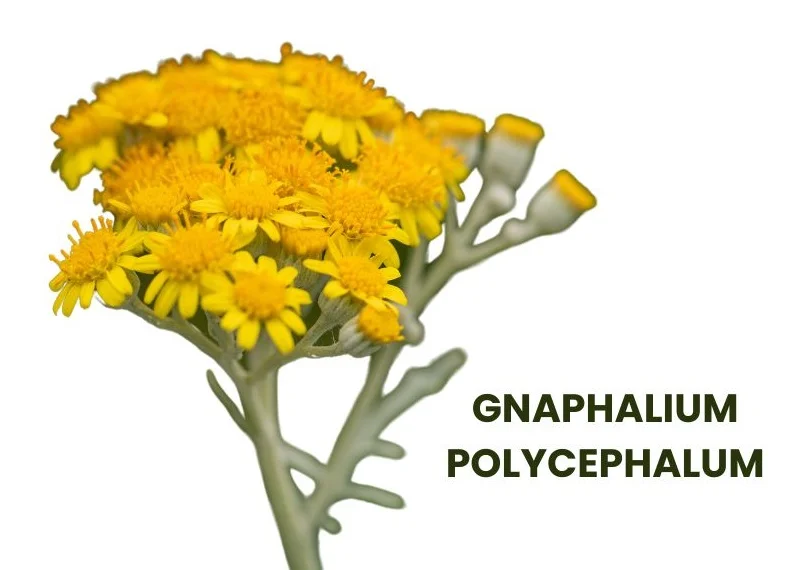Gnaphalium polycephalum, commonly known as Cudweed or Old Balsa, is a homeopathic remedy primarily used to treat sciatica and rheumatism, especially when these conditions are associated with numbness.
It also addresses gastrointestinal issues like morning diarrhea and polyuria (excessive urination).
This remedy is beneficial for various pains and discomforts, particularly in the lower back and extremities.

Table of Contents
ToggleSOURCE INFORMATION
Scientific Classification
- Kingdom: Plantae
- Clade: Angiosperms
- Clade: Eudicots
- Clade: Asterids
- Order: Asterales
- Family: Asteraceae
- Genus: Gnaphalium
- Species: G. polycephalum
Origin
- Gnaphalium polycephalum, commonly known as Cudweed or Old Balsa, is native to North America.
- It is predominantly found in the United States and Canada.
- The plant thrives in open fields, along roadsides, and in other disturbed areas, often seen in dry and sandy soils.
Historical Facts
- Traditional Use: Historically, Gnaphalium has been utilized by Native American tribes for its medicinal properties.
- It was particularly valued for its ability to relieve pain and inflammation.
- Homeopathic Introduction: In the late 19th century, Gnaphalium was introduced into homeopathic practice.
- Its effectiveness in treating nerve pain, especially sciatica, and various rheumatic conditions made it a staple in homeopathic medicine.
Homoeopathic Application
Gnaphalium polycephalum is primarily used in homeopathy for conditions related to nerve pain and rheumatism.
It is particularly effective in treating sciatica when the pain is accompanied by numbness.
Other notable uses include relief from morning diarrhea, polyuria (excessive urination), and various forms of back pain.
DRUG PATHOGENESIS
- Gnaphalium polycephalum acts primarily on the peripheral nervous system, musculoskeletal system, and the gastrointestinal tract.
- It exhibits a particular affinity for the sciatic nerve, leading to pain and numbness.
- The remedy also affects the urinary system, causing polyuria, and can relieve symptoms of chronic back pain and rheumatism.
KEY CHARACTERISTICS
- Sciatica: Intense pain along the sciatic nerve, often accompanied by numbness in the affected part.
- Morning Diarrhea: Loose stools primarily occurring in the morning.
- Polyuria: Frequent and excessive urination.
- Rheumatic Pain: Pain in joints and muscles, particularly in the lower back and legs.
DETAILED ORGAN SYMPTOMS
FACE
- Intermittent Pains: Occasional sharp pains in the upper jaw (superior maxillary) on both sides.
ABDOMEN
- Borborygmus: Rumbling sounds in the abdomen due to gas.
- Colic: Abdominal pain that occurs in various areas.
- Irritated Prostate: Discomfort or pain in the prostate gland.
- Cholera Infantum: Early stage characterized by vomiting and purging in infants.
FEMALE REPRODUCTIVE SYSTEM
- Pelvic Fullness: Sensation of weight and fullness in the pelvic region.
- Dysmenorrhea: Scanty and painful menstrual periods.
BACK
- Chronic Backache: Persistent pain in the lumbar region, which improves when resting on the back.
- Lumbago: Lower back pain with numbness and a feeling of heaviness in the pelvis.
EXTREMITIES
- Leg Cramps: Cramps in the calves and feet, particularly when in bed.
- Rheumatic Pain: Pain in the ankle joints and legs.
- Sciatic Pain: Severe pain along the sciatic nerve, with alternating numbness.
- Gouty Pain: Pain in the big toes and joints, often relieved by drawing the limbs up and flexing the thigh on the abdomen.
- Anterior Crural Neuralgia: Pain in the front of the thigh, often linked with stiffness and lack of lubrication in the joints.
- Muscular Rheumatism: Chronic pain in the muscles of the back and neck.
MODALITIES
- Worse: Symptoms often worsen with movement and cold, damp weather.
- Better: Relief is typically found by resting and flexing the affected limbs.
WHAT ARE MODALITIES IN HOMOEOPATHY?
RELATIONSHIP WITH OTHER DRUGS
- Compare with: Xanthoxylum (for sciatica), Chamomilla (for nerve pain), Pulsatilla (for menstrual issues and pain).
DOSE
- Potency: The remedy is used in potencies ranging from the third to thirtieth.
- Administration: The appropriate potency and dosage should be determined by a qualified homeopath based on individual symptoms and overall health.
Frequently Asked Questions (FAQs)
What conditions can Gnaphalium polycephalum treat?
- Gnaphalium polycephalum is used to treat sciatica, rheumatic pain, morning diarrhea, polyuria, abdominal colic, and various forms of back pain.
Is Gnaphalium polycephalum safe to use?
When used in homeopathic dilutions as prescribed by a qualified homeopath, Gnaphalium polycephalum is safe. It is important to follow the dosage instructions carefully.
How is Gnaphalium polycephalum prepared in homeopathy?
- The remedy is prepared through a process of serial dilution and succussion (vigorous shaking), which creates a highly diluted solution retaining the therapeutic properties of the plant without its toxic effects.
Can Gnaphalium polycephalum be used for both acute and chronic conditions?
- Yes, it can be used to treat both acute and chronic conditions, especially those related to nerve pain, gastrointestinal issues, and rheumatism.
Glossary of Difficult Words
- Sciatica: Pain that radiates along the path of the sciatic nerve, which extends from the lower back down through the legs.
- Polyuria: Excessive or abnormally large production or passage of urine.
- Borborygmus: A rumbling or gurgling noise made by the movement of fluid and gas in the intestines.
- Dysmenorrhea: Painful menstruation, typically involving abdominal cramps.
- Lumbago: Pain in the muscles and joints of the lower back.
- Neuralgia: Intense, typically intermittent pain along the course of a nerve.
- Succussion: The process of shaking a homeopathic remedy during its preparation.
This detailed overview of Gnaphalium polycephalum (Cudweed, Old Balsa) provides a comprehensive understanding of its origin, historical use, and specific applications in homeopathy, along with a clear description of the symptoms it addresses and how it is prepared and administered.
